In describing our adventures in locking, several people have asked to explain how locks work and what it’s like to go through locks, so here’s my attempt to describe the experience.
Locks were created to facilitate transportation of goods between bodies of water that are at different elevations. Before highways, waterways were the primary means of transporting goods from one place to another. Before locks, goods would have to be unloaded from a boat, moved onto horses or carts and carried overland to the next river where they would be reloaded onto other boats to reach their destination. Locks, along with the digging of canals between bodies of water, transformed the ability to carry on commerce before the invention of the railroads and the construction of highways.
The locks we are traveling on in this portion of our journey are primarily used by pleasure craft but were originally built for commercial use. On the major waterways such as the Mississippi, they are heavily used by commercial traffic as well. Here is a map of the locks that we’ll be traversing on the portion of our trip from the Hudson River through to Montreal.
Locks are essentially mechanical walls that hold water back and release water to allow boats to transition from one elevation to another. Locks are staffed by a lock master who a boater notifies when approaching a lock. On the NY canals there is a red traffic light indicating that the boater must wait until the lock is ready. You can lock up or lock down depending on whether the elevation you are moving towards is higher or lower. In either case, the lock master opens the large gates and directs boats to enter and tie up on either the port (left) or starboard (right) sides of the lock. Depending on the size of the lock or the number of boats waiting to lock through, the NY locks can hold between one and eight boats. On the St. Lawrence and the Mississippi Rivers the locks are much bigger and hold large barges as well.
The boater must have already placed several large fenders on the sides of the boat to prevent the boat from rubbing against the lock walls which are often rough, dirty and slimy.
When entering the lock, the boater must secure the boat to the lock wall either by grabbing a line (rope) that is hanging down the lock wall or hooking one of the boater’s lines around a vertical pole on the lock wall. The boater then holds those lines (not tying them) while the lock master closes the gate and floods the lock with water (if locking up). The NY locks are mechanical. The locks in Canada which we will pass through are turned by hand! As the lock floods with water, the boat rises higher and higher until it is even with the “higher ground.” Sometimes it can be a challenge to hold the boat steady against the lock wall especially if the water is flooding in and sloshing round. But usually, it goes pretty smoothly.
When the lock is full, the lockmaster opens the gate and directs the boaters to move out, one at a time.
When locking down, the same process occurs except that the lockmaster is releasing water from the lock and the boat and water levels drop until they are level with the lower side of the waterway. 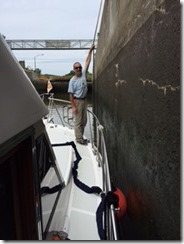

The dangers associated with locking are not securing to the lock wall properly (either tying up to tightly or too loosely).
Lock tenders tend to be very friendly and helpful in providing information about the next lock. Sometimes one has to wait for the locks to open and circle around or tie up at a wall outside of the lock. Oftentimes, there are attractive parklands nearby and sometimes one can tie up at one of these dock walls overnight.
So far we have gone though about ten locks on the Hudson River and two in the Dismal Swamp. We’ll have more to go through as we enter the Chambly Canal in Canada. We’ll keep our fingers crossed that all continues to go smoothly!
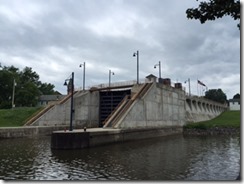
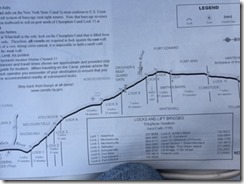
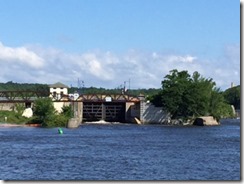



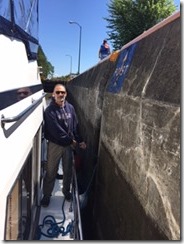
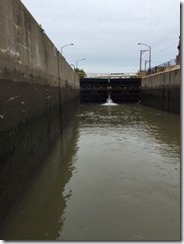
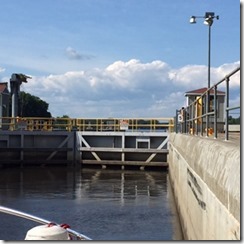

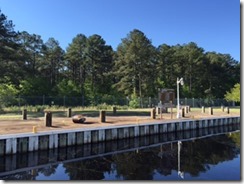

No comments:
Post a Comment